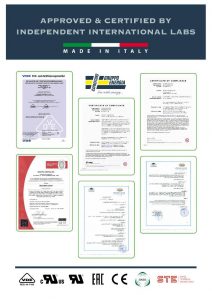1. Analyze
Analyse the situation of your production plant: check which machineries require the most energy to run.
2. Schedule
Take advantage of off-peak periods.
First of all, choose a utility company that offers lower rates during off-peak periods.
Secondly, schedule the use of energy consuming machinery outside of peak hours.
This will not only help you reduce your energy bills without necessarily reducing the energy consumption, but it will also prevent creating a large spike in your facilities energy demand caused by powering up all equipment at once.
3. Turn off
Shut off machinery and equipment when not in use. At the end of each working day, walk through your plant and make sure all the equipment is powered down. This will bring you significant savings over time.
4. Clean and maintain equipment
Regular cleaning and planned maintenance of your electrical and mechanical equipment will optimise its performance and lifespan.
5. Optimise Air Compressors
Reduce the operating pressure of your air compressor, check for leakages, and turn it off completely when not in use.
Industrial air compressors may cause huge amounts of energy consumption and waste. The reasons are several, from poor designing to an improper maintenance.
If you have multiple leaks, it means that your air compressors are literally draining money from your operations budget.
6. Make Your HVAC system more efficient
Sometimes you can reduce HVAC energy consumption by 30% only by repairing and insulating the ducting.
However, newer heating and cooling systems are much more efficient than old ones, so it may be worth replacing systems that are more than 10 years old.
Both blow heaters and portable radiators use significant amounts of electricity, so discourage their use.
Lastly, set your air conditioning and heating to the optimum points during summer and winter. You can install a programmable thermostat that can automatically adjust itself to the current temperature of your workplace, in order to avoid energy wastage.
7. Shade windows and walls
One of the sources of heat entering a building are the unprotected windows. The radiant energy of the sun can generate the same local heat as a single bar radiator.
Tip for saving energy: use fixed or adjustable shading, install sun filters on the windows and walls of the workplace.
8. Plant Trees
Planting trees is not only great for the environment, but they may also help you save some money in the long term. In fact, during summer, trees can act as a shade for your building by blocking out the sun. Your offices would be cooler, and you would be able to reduce the need for air conditioning.
9. Install good insulation
During winter it can be very expensive to keep your office space warm. You can reduce your heating costs by investing in wall insulation as well as ceiling insulation.
10. Install Energy-Efficient Lighting
LED bulbs use about a quarter of the energy to produce the same light as halogens, and last five to ten times longer.
Turn off or remove lights in non-essential areas.
If you have vending machines in your facilities, you can place them in well-lit areas, but remove their individual light bulbs. This can help you reduce some of your electrical usage.
Another option is to use automated lighting systems that make adjustments based on the room’s occupancy or daylight availability. You can also install day/night switches to automatically control outdoor lighting.
Switching off lights is one of the easiest ways to save on energy. However, it is incredible how often lights are kept on, even when no one is in the lit area. This happens especially when employees need to move often through buildings or work areas. In order to solve this issue, you can install motion detector sensors that only switch lights on when the area is in use, or you can make more effort to involve your employees.
11. Involve your employees
Involving your staff will empower it to develop new ideas and will help you make the energy savings initiative more effective.
You want your employees to change their behaviour also when you’re not in the room, and in order to achieve that, you need to communicate.
Emphasize the importance of reducing energy consumption, by explaining how savings can benefit the entire company, including them. You can say something like this:
“If we reduce energy costs, we may have enough savings to invest in new equipment to make your job easier. We all need to collaborate.”
You can get your employees to become more involved and proactive with small incentives or by making it fun.
For example, you can introduce an energy box, where anyone caught wasting energy would have to drop a small amount of money, which the rest of the team will use at the end of the month or year to have some fun together.
12. Process Heating
In the manufacturing sector, more than one third of energy is used by process heating.
Make sure you monitor and control your exhaust gases, air-to-fuel ratios, heat-transfer improvements and any waste-heat recovery technology.
If your manufacturing process requires significant amounts of hot water, preheating it with a solar heating system will bring significant savings.
13. Produce on demand
You can avoid energy-wastage by scheduling your manufacturing activities for times when you actually have sales demand for your products from customers.
14. Energy-efficient equipment
When buying new machineries or any type of equipment, make sure they are designed to conserve energy.
15. Renewable energy
Install a solar panel in your office or factory, in order to take advantage of free solar energy, instead of paying for electricity.
16. Work from home
This topic has never been so current.
Rather than have your employees come to the office daily, where they have to make use of your resources (especially energy), you can encourage them to work from home. They can come to the office only when it is really necessary for them to be physically present.
17. Go Paperless
This will also benefit the environment in more than one way.
Moreover, processing paper costs your business a lot of money. Printers and photocopiers consume a lot of energy. Make your business completely electronic and you can completely cut out these costs.
18. Contact your utility providers
Your utility providers can become partners in energy savings. Review your current usage plans and contact them to check if they can offer alternative plans, that might save you money. In fact, many utilities offer incentives for installing energy-saving improvements. You can also benefit from the competition between utility companies: don’t be afraid to negotiate!
19. Improve CosΦ
If your utility bills are still high, check if you are paying penalties for a low cosΦ. In fact, in many countries a penalty is added directly to your energy bills if the cosΦ value is less than 0.95.
Consider energy efficiency measures such as power factor correction. Sometimes the easiest and most immediate solution to energy problems is to install a capacitor bank or a SVG.
Contact us for more information, we are happy to help!

